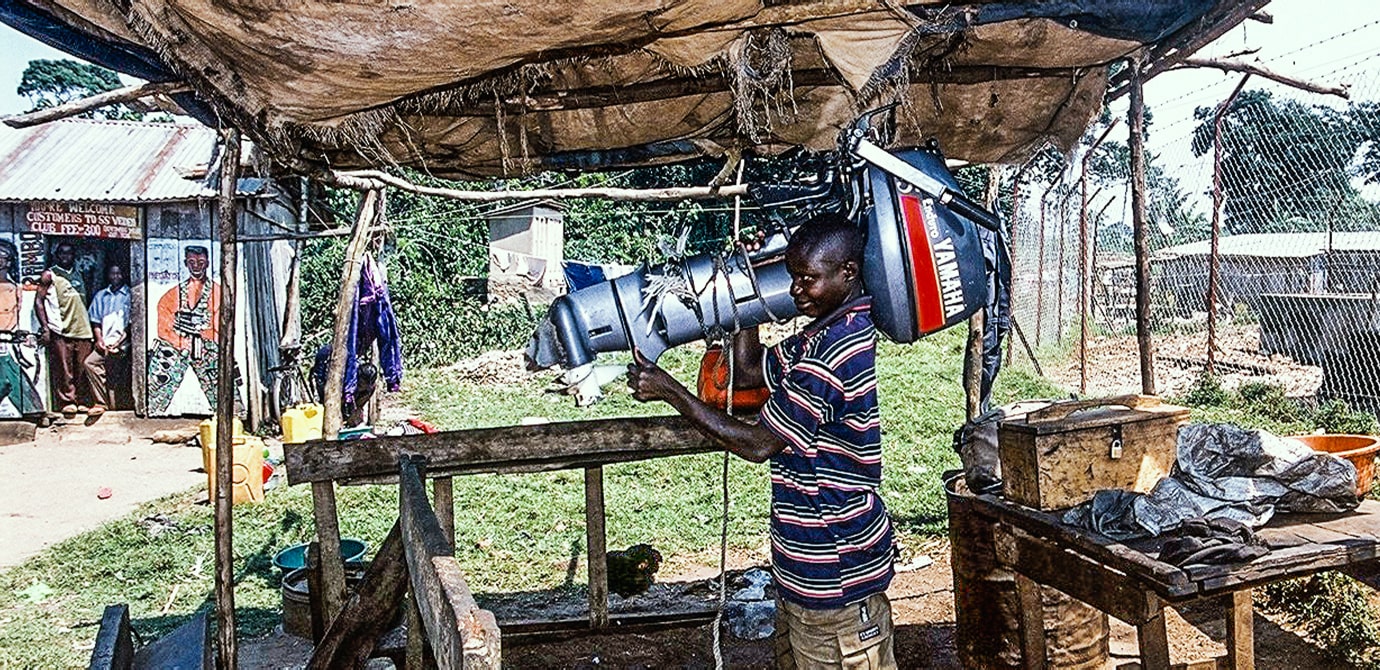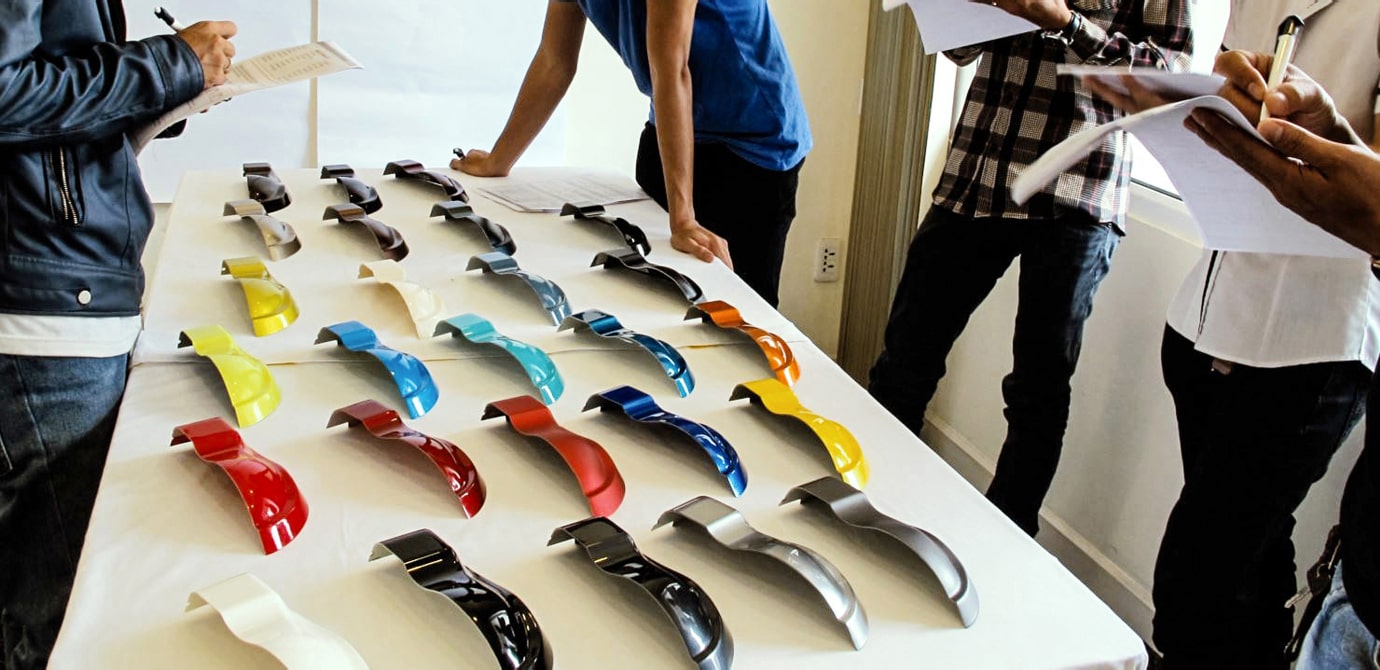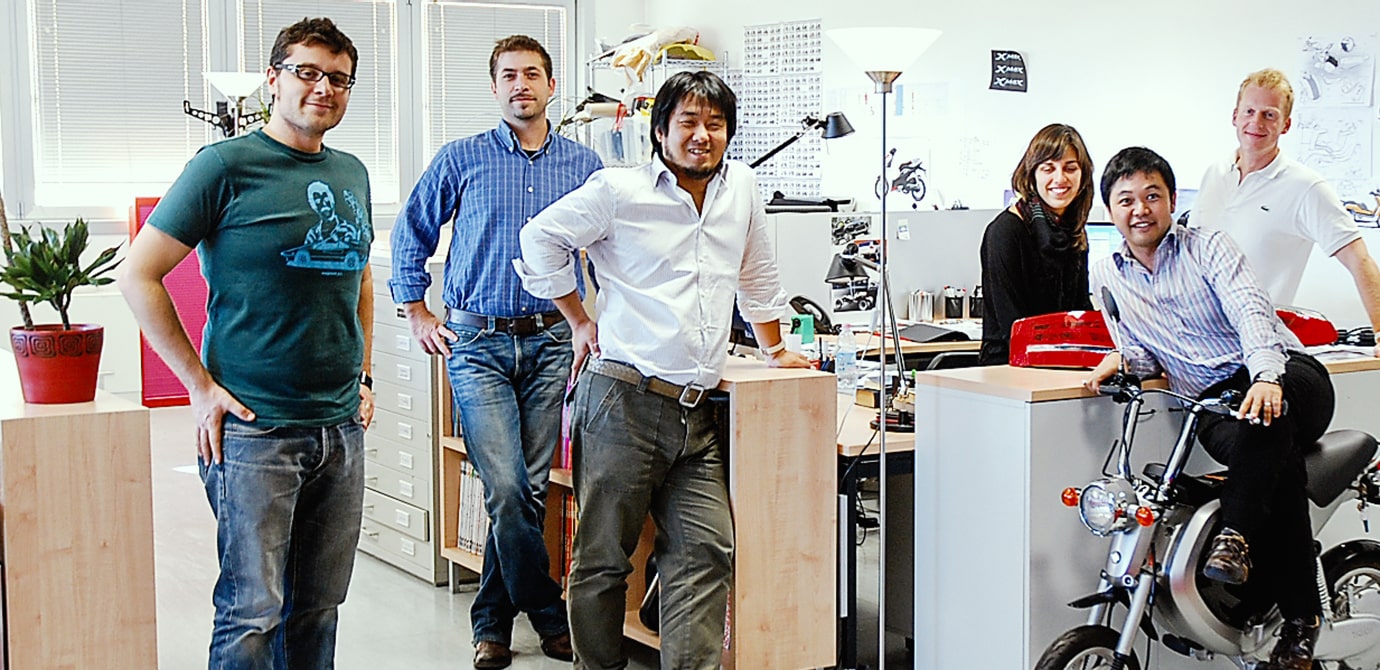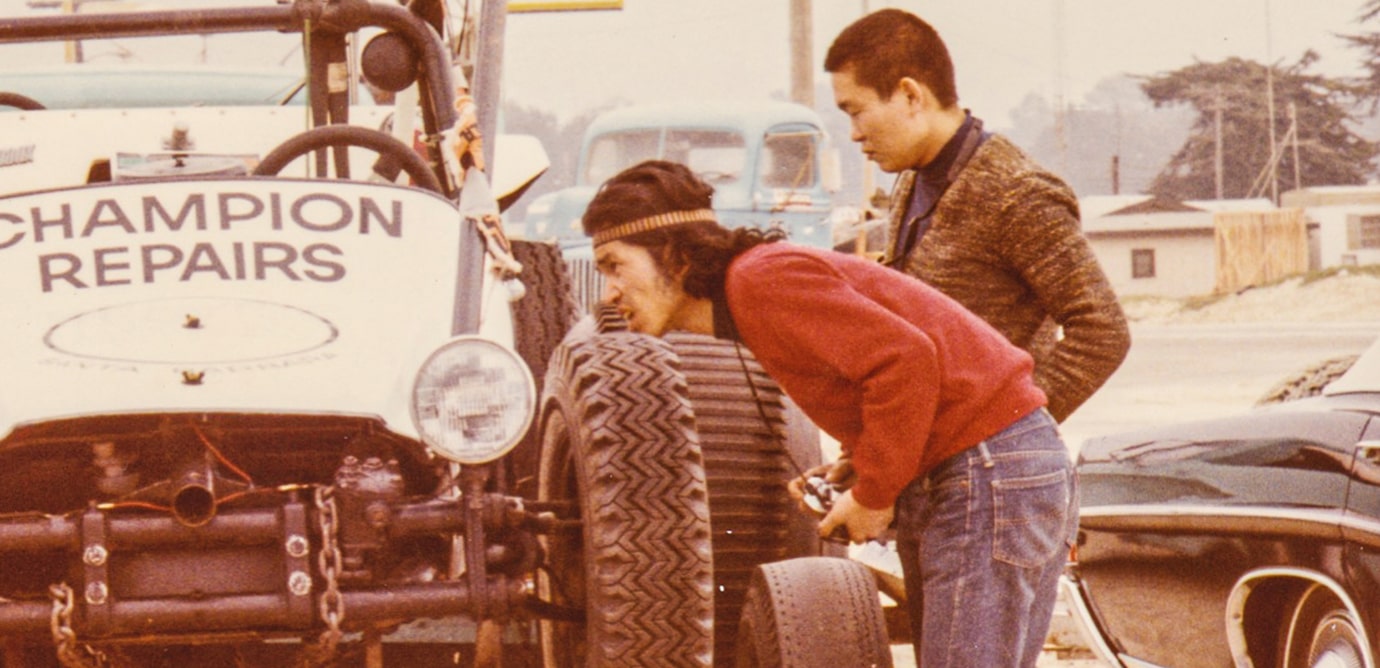DAYSIN THE STUDIO
Where, how and by whom will it be used? Things like a region’s culture, lifestyle and tastes cannot be grasped with information alone. In the same way Yamaha develops its technologies, our designers also often leave the studio and travel to a variety of locales to experience them firsthand, in both Japan and overseas. The first design sketches are almost always drawn outside the studio.


Can This
Outboard Motor
Be Carried?
Can This Outboard Motor
Be Carried?
“First practice carrying it in Japan, then leave on your trip. If you can’t carry it here, you won’t be able to investigate or verify anything in the field.”
In many places, an outboard motor is considered valuable property and they are often kept in homes or storage sheds. When heading out on a fishing trip, the motor is loaded into a car or onto a handcart to take it to the waterfront, and then the motor is carried on the shoulders to attach it to the boat. And of course, once the fishing trip is over the same process is repeated in reverse. In this type of market, a shape and weight that allows the motor to be carried are important development factors. Yamaha’s engineers and designers can’t expect customers to carry something that they can’t carry themselves.

To carry out advanced development of 4-stroke Enduro outboard motors, the designer and engineer set out on a tour of Africa, South America and Southeast Asia to experience this firsthand. The experience was just as valuable as going out on a boat together with the fishermen and researching everything about the industry. After that, while drawing the lines of the product, they could honestly ask themselves, “Can this outboard motor be carried?”


Changing
Your Own Eye Color:
How Does It Look Now?
Changing
Your Own Eye Color:
How Does It Look Now?
With varying cultures, religions, natural environments and daily customs among people in different countries, what is the best way to deliver products people will be happy with? For Yamaha, that really comes down to having employees actually go to the countries and observe how people there live their lives. That goes not only for the planning, development and sales departments, but also for the design department.
Commuter models need to fit smoothly into daily life; they require a sense different from sport models, with colors and graphics that reflect the atmosphere of the times. However, simply going into the field and investigating the latest trends and then incorporating them into a design is inefficient and will not result in something consistent with Yamaha’s design language. To quickly produce finished products that are pioneering for their time when released, the design team has a constantly honed method of predicting the trends in colors and graphics and then including them in Yamaha products.

Yamaha maps things that are ever-present in a country, such as its culture, religion and daily customs, against cultural factors that change with the times, like what is uniquely popular in the country at the moment and worldwide trends. Then, the designers search for the next direction Yamaha should take. It is not about creating designs at random relying only on our senses, but keeping in mind the importance of including a logical and scientific approach.


The Pressure of
Scrutiny
The Pressure of Scrutiny
The woman cleaning the offices at one of Yamaha’s group companies in Italy pauses her mopping and says “Good morning!” with a bright smile to greet a Japanese designer as he comes into the office. But after this it gets a bit...scary. Her gaze turns sharp as she examines him, starting from his feet and moving upward bit by bit, taking her time until she reaches the very top of his head. She then responds with, “Mm, your shirt today is quite nice. But those shoes...haven’t you worn them every day this week?”
Even if somebody in Milan didn’t know the Yamaha brand name, they would still certainly know what the “TMAX” is. They would be keenly interested in exactly what kind of person designed the stylish machine. The feeling of being scrutinized personally must be a different sensation to releasing a product and it being scrutinized by the market.


Curiosity Is
the Real Source
of Imagination
Curiosity Is
the Real Source
of Imagination
There is a natural limit to how possible it is to design models for overseas markets from within Japan. Even if a wealth of information is gathered, it is still just information and not the be-all and end-all. There are things that can only be discovered by going into the field. To get that personal experience, the designers themselves chose to head overseas. When the original VMAX motorcycle was being developed, the designer in charge was working in the U.S. Residing in Los Angeles, he had experiences like watching drag racing events in the countryside, owning and driving a muscle car and riding his motorcycle across the continental United States. He did it all as part of a search for the American spirit, as if putting his fingers on the pulse of the nation.

The GK Design Group established local subsidiaries in Los Angeles in the 1960s and Amsterdam in the 1980s and sent their designers out to various locations. However, their mission in the field was not only to design things there, but to work alongside the local employees to absorb and inherit the sense of beauty created by the local people and culture.






